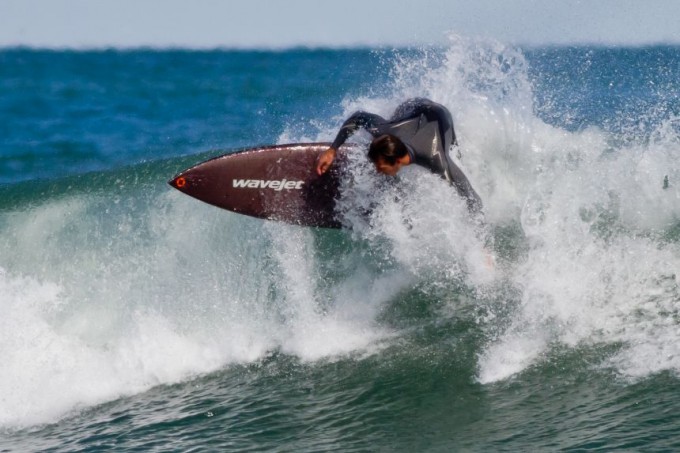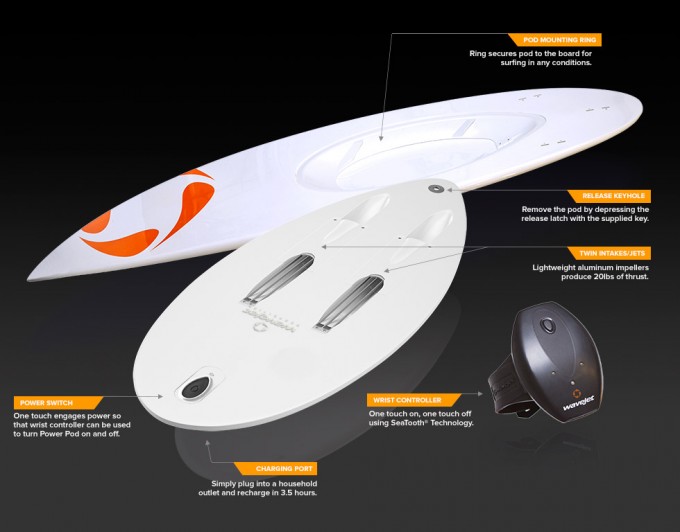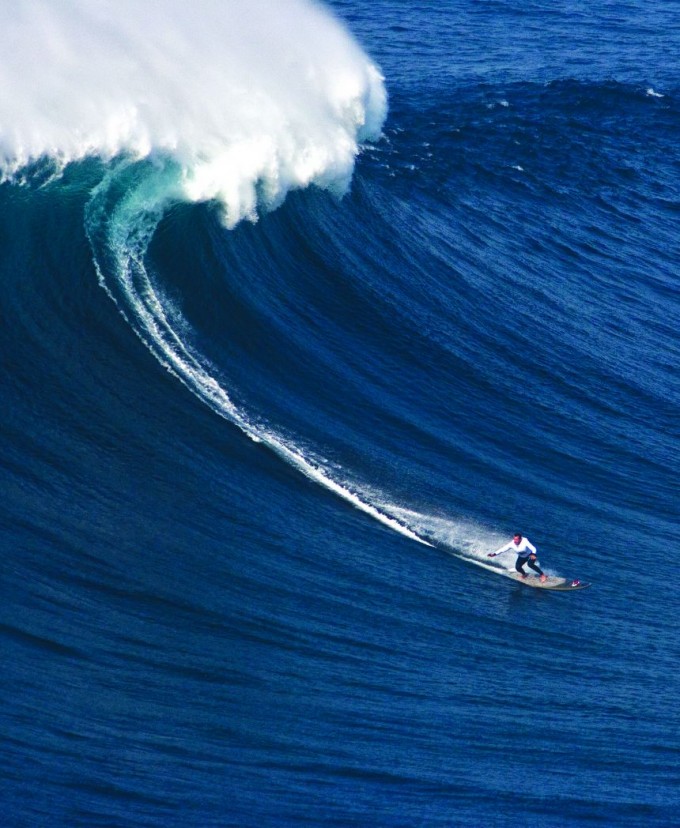
For many surfing purists, heck for many surfers full stop, a motorised surfboard is the devil incarnate. A jet-propelled Satan spawn that will wreak havoc on already crowded and frustrated lineups all round the world.
In a surfing world where even the best big wave riders are turning their backs on jet skis and are paddling into waves as high as 10 story apartment blocks, surely the surfing world doesn’t need a surfboard that has taken human paddling power out of the equation?
“I was very skeptical at first,” says Love Hodel, a professional surfer and now stuntman from Oahu. “Being Hawaiian and a big wave paddle guy I didn’t really see a place for them, but then I tried a WaveJet. And that’s what I say now. Just give one a go and then make your mind up.”
What are they like to ride?
This winter in Hawaii I did try one and the set up is, from the outside at least, fantastically simple. WaveJets twin jet motors are powered by lithium batteries and controlled by a simple on off button worn on your arm like a watch.
The engines are located in a removable pod that clips into the base of the board. I rode a longboard, although SUP and standard shortboard versions are available.

Lying on the board I pressed the on switch and the board automatically and soundlessly, moved up to a speed of ten miles per hour, or about five times my normal paddling speed.
“In the space of half hour I probably caught 20 waves, an impossibility on a normal board.”
I could then stand up on the board, even in still water, and catch whatever wave I chose. In the space of half hour I probably caught 20 waves, an impossibility on a normal board.
“We advise is to keep the jets on, even when you are on the wave,” says Kelly Virgulto of WaveJet.
“While you can ride the wave without the jets, they actually cause the surfboard to push down on the surface of the wave, making it easier to control the board. The paddling is one thing, the actual performance on the wave is as important.”
What are they good for?
The boards are much heavier than normal fibreglass surfboards, the pods themselves weighing seven kilograms, although top flight surfers like Hodel, former top ten professional Corey Lopez and big wave surfer Garrett McNamara are pushing the limits of the new designs, in waves ranging from 2 to 50 feet.
Also increasingly the boards are finding alternative uses. Fisherman are finding them an amazing tool on the SUPs, surfers with disabilities that can’t physically paddle have a new freedom and recent rescue boards have been made.
A trial period of the rescue boards in the thunderous waves of Sunset Beach in Hawaii this winter proved incredibly successful.
Surfers with disabilities that can’t physically paddle have a new freedom.
At the moment the battery life of the boards are 35 minutes of continuos run time (WaveJet says this amounts to an equivalent of two hours actual surfing) and you can recharge the batteries with a normal plug socket or car lighter.
As for concerns for the board driving off into the distance when you wipeout, maybe dragging you along by the legrope, as soon as you are separated from your board by more than 10 feet, the remote control system automatically kills the engine.
How do they work?
The jet engines are the brainchild of Californian Mike Railey, who after trying his hand at tow surfing in the late 1990s wondered if it was possible to miniaturise the jet drive technology used in jet skis.

While powered boards had been around since the 1960s, they had always been too heavy and often used petrol fueled engines which also had a negative environmental impact. After ten years of prototypes Railey applied for a patent which was registered in 2007.
Like Hodel, I found the experience of the WaveJet fairly compelling after my initial wariness. As a fairly experienced surfer the thrill of zooming back out to the lineup without paddling was pretty special.
“At the moment the boards’ high price tags are keeping them out of the lineup in big numbers.”
My friend, Jason Horton, who had only been surfing for a few years was however more effusive. “I love surfing, but as a snowboarder I’ve always struggled with the paddling side of side of surfing. I caught more waves in that surf than I have in the last two weeks!”
It was worth pointing out that we were surfing alone, a rarity in the modern world. The problem will come when WaveJets and normal surfers are forced to share the waves. With WaveJets having a considerable advantage there is no doubt that tensions will arise.
Such is the efficiency of the technology and the feeling of the boards, I have no doubt that their popularity will only increase.
At the moment the boards’ high price tags are keeping them out of the lineup in big numbers with the whole kit, including board, pod, remote and charger coming in at around $US4,500 (£2,700).
However it is early days and if they become popular, you’d think with economies of scale the price will come down in the future.
If that happens and WaveJets become affordable to the normal punter, expect to see a lot more surfers streaming past you, not paddling, in the very near future.
What do you think, is using a motorised surfboard somehow cheating? Or will you be jumping on one as soon as you can?